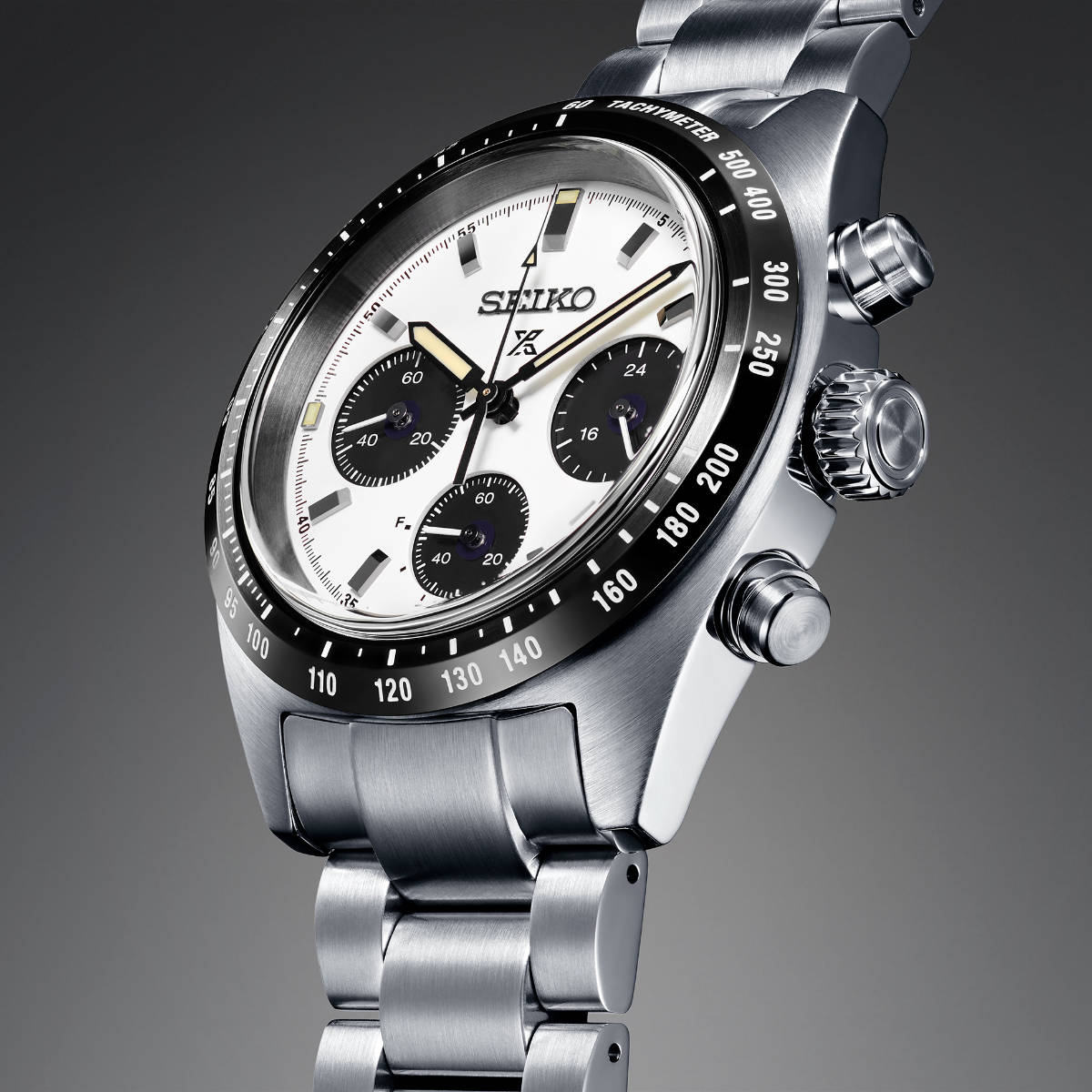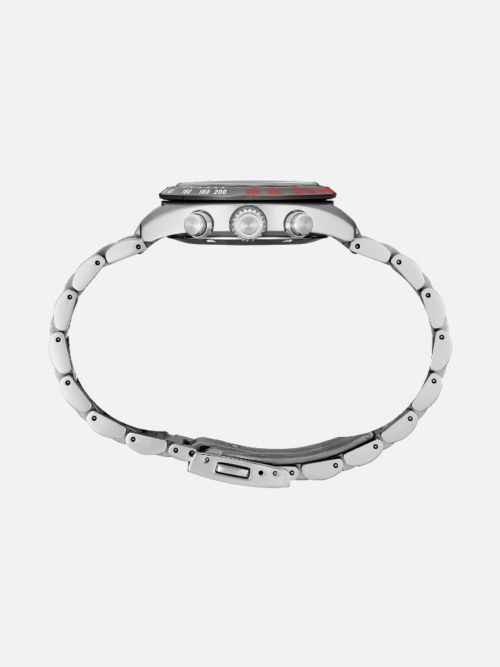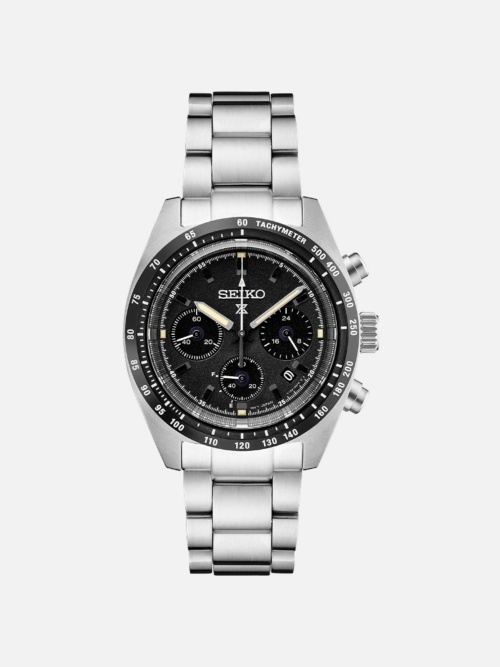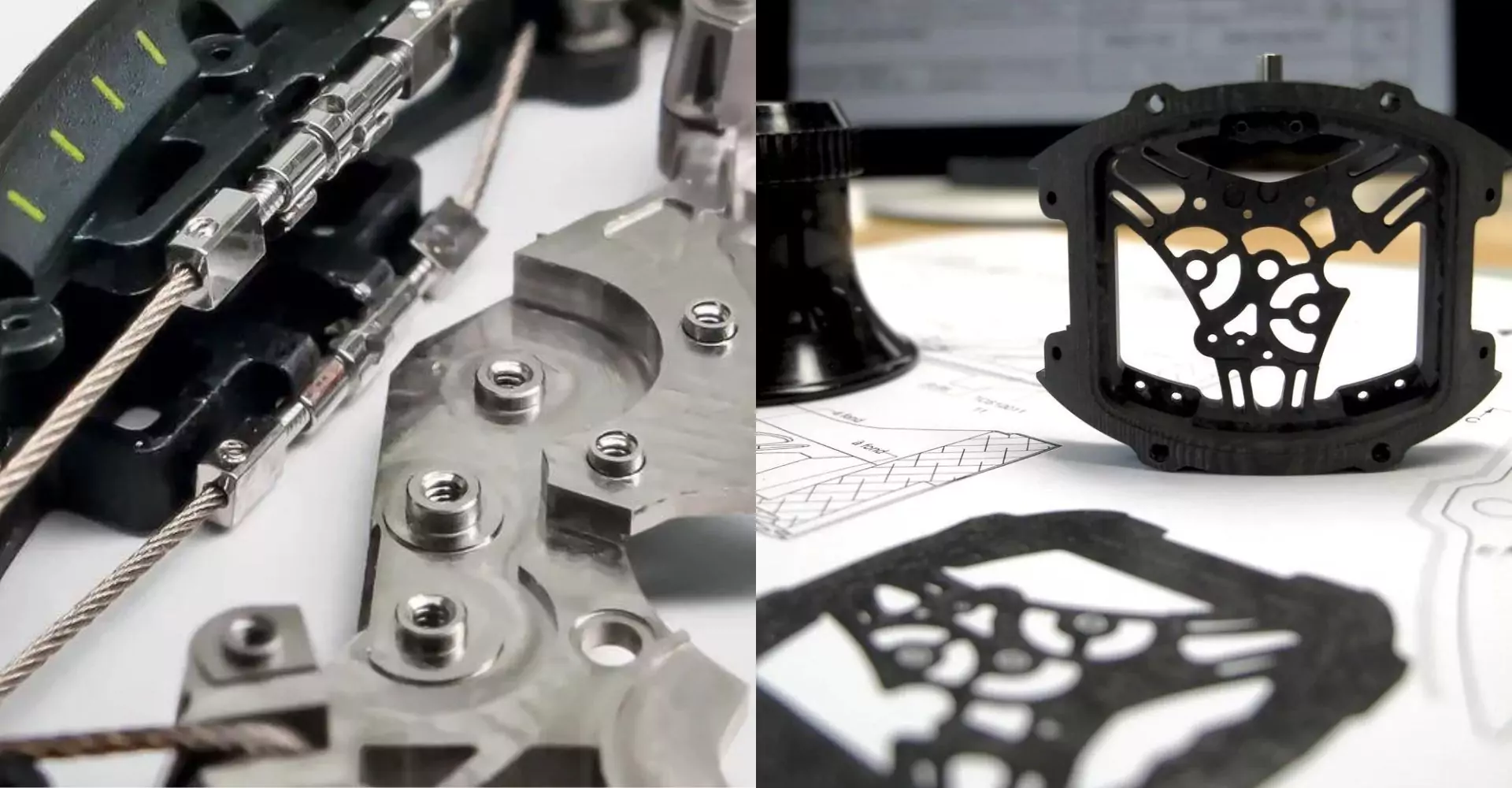Seiko Prospex Speedtimer Chronograph Solar SSC81X
Seiko, how long have you been confusing us? The Japanese giant has an enormous and sprawling production, ranging from the stern and pure effectiveness of some of its primary lines such as the Seiko 5, produced now for almost 70 years and unchanging in its proverbial convenience, to avant-garde technical solutions like those adopted in its top line, the Grand Seiko – magnificent watches that once wristed you can never forget.
And in between, thousands and thousands of models are offered, subdivided in a dizzying array of more or less famous lines. But among them all, Prospex stands out, distinguished by that angular and often somewhat intrusive logo that looks like a cubist butterfly, and indicates the professional offerings of the Japanese Maison.
The Prospex line encompasses timepieces of every kind and type, from mechanical to solar – and it is precisely this last edition that we will be commenting on in a moment: the chronographs of the SSC81X series equipped with the V192 solar-winding quartz movement that accompanied the launch of the “bad boys” of a much higher range (and price), based on the 8R46A column-wheel with vertical clutch automatic movement, and which caught the enthusiastic attention of mainstream horology commentators.
We feel that this line of solar chronographs has been unfairly overshadowed by the (excellent) quality of the mechanical-based pieces. Flying so much under the radar that people could not really get the knack about this fascinating line of chronographs and its excellent price/performance ratio.
The Seiko Solar V192 movement
Many watchmaking enthusiasts turn up their noses when you talk about “quartz” or “solar” as if we were uttering a sort of blasphemy. Instead, in a pragmatic Japanese way, Seiko has been able to go beyond the self-imposed limits of the traditionalist establishment to dive into innovative solutions that have redefined the history of modern watchmaking. We always remember that Seiko was the first to create a quartz chronograph, with the famous 7A28-7000 “Ripley” designed by Giorgetto Giugiaro, and developed a hybrid mechanical movement such as the Spring Drive, credited with an accuracy of +/- 0.5 seconds per day – ten times more accurate than the typical you-know-who-does-it chronometer branded by a crown.

And the Seiko Solar V192 mechanism, while less glorified than its relatives we’ve just mentioned, can defend itself very well: being a quartz-based movement, it has an accuracy that rivals that of the Spring Drive, it has an autonomy of six months from the last charge, and its lithium-titanium manganese accumulator needs just 5 hours of exposure to sunlight to get a full charge.
The timepiece’s chronographic performance is quickly said: the main dial offers hour and minute readings, while continuous seconds are shown in the third central subdial, which also functions as a power reserve indicator. The other two subdials show minutes and hours (up to 24). The chronograph function is accurate to the 5th of a second.
From the (end of) Sixties with love
The inspiration behind these four timepieces can easily be traced back to 1960s chronographs. A classic tricompax style, which fully recalls the Speedtimers launched by the Japanese company in 1969, available in four different sandblasted dial variants in white, black, khaki, and blue, equipped with contrasting polished metal markers, as well as the subdials, in Panda configuration for the variants with the light dial, while they are tone on tone for the dark ones. At four and a half o’clock, there is a discreet date window, with a light background for the light dials and a dark one for the dark ones – a small note that accurately conveys the attention to detail of these timepieces.
And the interplay of the gladius hands, fitted with appropriate doses of Lumibrite, makes the dial clearly visible even in low light conditions. On the other hand, the black bezel is inspired by modernity and features a satin-finish treatment, with an unusual truncated cone shape with two surfaces. The flat part surrounding the mineral crystal glass houses contrasting hollowed markers, while the tachymeter scale, also, in contrast, appears on the oblique part below.

Stylish details for a perfect fit
Needless to say, these timepieces place themselves in the current Golden Rule of watchmaking proportions: balanced 39 mm cases in satin-finished steel, complemented by perfectly connected three-link bracelets with hidden retractable clasp, featuring a sober and solid design.
The watch’s thickness of just over 13 mm is entirely congruent with the design of the timepiece and is as pleasing to the wrist as it is to the eye, and the anti-scratch mineral crystal offers good readability of the dial under all circumstances. The watch features a more than adequate water resistance of 100 meters, allowing you not to worry too much about it during daily use – that is assumed to be more casual than formal.
Our verdict
As we have said, the SSC81X series solar chronographs offer much more than they require: an always-ready movement of proverbial Seiko quality; a truly apt design, re-proposing in a modern key the beauty of the Japanese company’s vintage chronographs of the late 1960s; an excellent quality of materials and finish, which puts watches that cost twice as much to shame; and finally, a low price, representing about one-fifth of their mechanical “big brothers,” which is really the icing on the cake for those who want a charming and reasonably priced chronograph they can use every day without remorses.
Technical Specifications
Seiko Prospex Speedtimer Solar Chronograph
SSC813, SSC815, SSC819
- Caliber V192
- Stainless steel case 39 mm, height 13.3 mm, stainless steel bracelet
- Curved sapphire crystal
- Applied bezel with tachymetric scale
- Water-resistant 100 meters / 10 bar
- Chronograph up to 60 minutes, 1/5 second precision. Tracking hours, minutes, seconds.
- Power charge indicator
- Lumibrite coating for the hands and markers
- Accuracy +/- 15 seconds/month
- Battery life, six months inactivity, five hours for a complete charge











